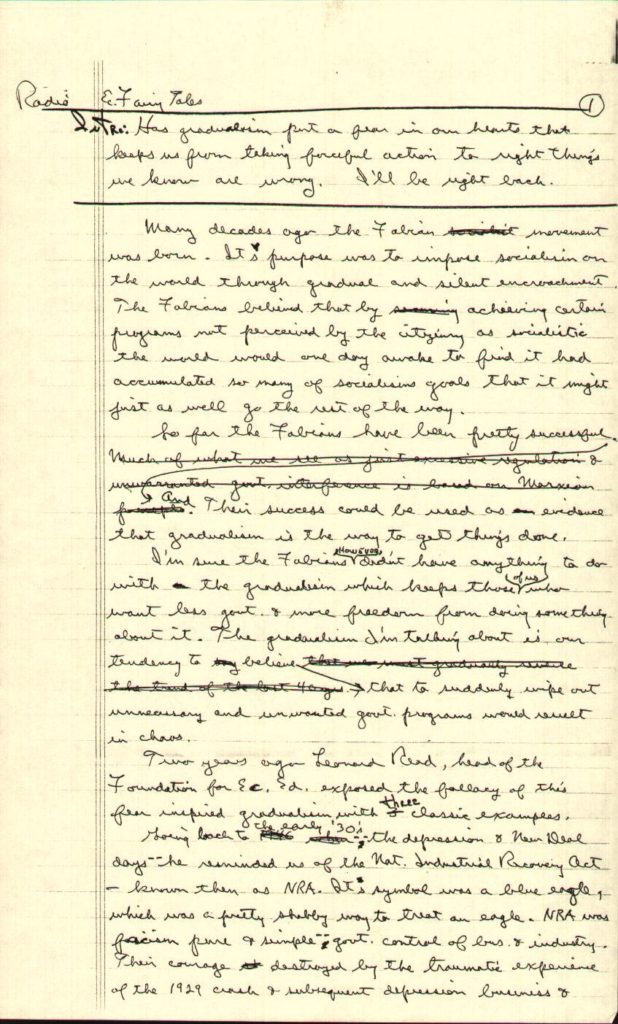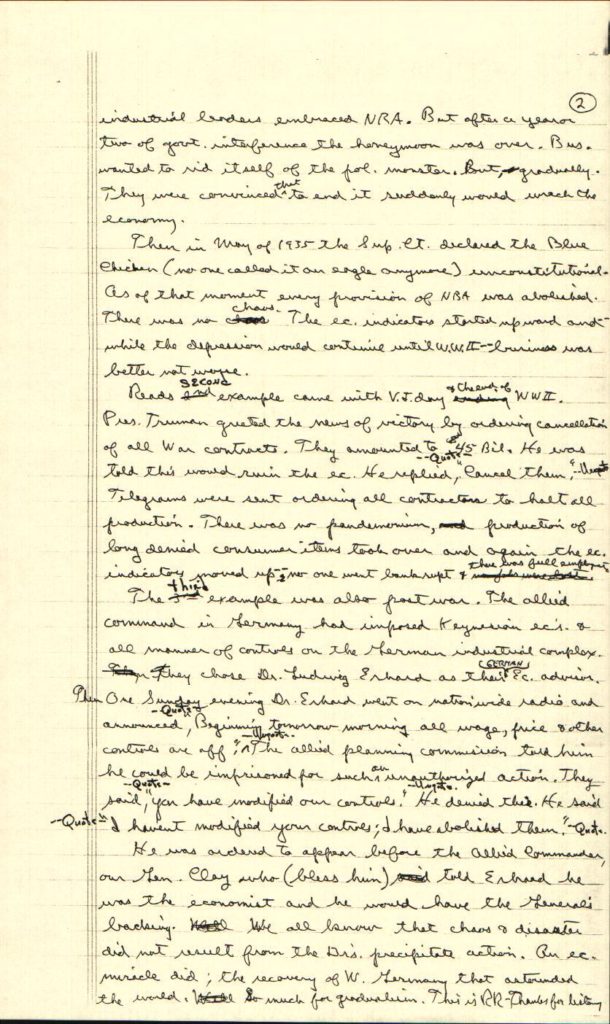Economic Fairy Tales and False Economic Stability
Ronald Reagan’s 1975-1979 radio broadcasts attracted millions of listeners each week. One of those broadcasts, Economic Fairy Tales, drew from three historical episodes to show why Americans should not be afraid to quickly end unnecessary government programs. These policy changes from history are relevant to a wide range of policy and value debate topics. And relevant to anyone curious what might happy if major government programs were ended. Transportation deregulation and abolishing the Civil Aeronautics Board (CAB) is one example described in The Commanding Heights.
After serving as governor of California but before running for president, Ronald Reagan recorded over a thousand radio broadcasts, most focused on reducing the size and scope of government:
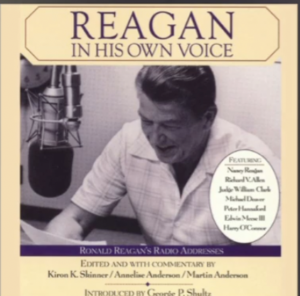
Reagan gave 1,027 of these addresses to an audience of 20 to 30 million listeners each week, interrupted only by his initial run for the White House in 1976. A researcher visiting the Reagan Library found that the former governor wrote at least 679 of the commentaries in longhand on yellow legal pads. The manuscripts are currently archived at the Ronald Reagan Presidential Library in California.
Ronald Reagan Radio Broadcasts (1976-1979), (National Registry, 2007)
Researchers found the yellow legal pages with Economic Fairy Tales in Reagan’s handwriting, including edits (see images at end of post). In Economic Fairy Tales (link to MP3 audio), three historical episodes are given, drawn from an essay by Leonard Read, founder and then president of the Foundation for Economic Education.
History can uncover principles in today’s public policy debates
Closing overseas military bases, cancelling weapons contracts, and bringing US troops home from South Korea and other of the 800 overseas military bases would hurt companies and cost jobs that produce military hardware and goods and services for troops overseas. But unless there are compelling national defense reasons for these commitments, the seen economic benefits are less than the unseen economic costs. See Frédéric Bastiat’s chapters 10. Algeria and The Demobilization in Selected Essays on Political Economy.
One of Ronald Reagan’s three historical examples is President Harry Truman’s cancellation of war contracts at the end of World War II. Businesses feared sudden cancellation of contracts would destabilize the economy, hurting companies and costing jobs.
Looking for historical examples relevant to economic stability, a debater asked:
How did the governments react to economic stability post WWI and WWII? Did the economic policies after WWI push oppressed nations into voting in even more oppressive leaders? Did the economic policies after WWII allow for stability?…
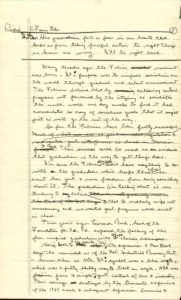
These questions relate to the other two episodes Ronald Reagan cites in Economic Fairy Tales: the failure and sudden end of the National Recovery Act (a major New Deal program), and West Germany’s Economic Miracle. Supporters long claimed that Franklin Roosevelts New Deal programs “saved” the U.S. economy from the Great Depression. Critics then and scholars now argue instead that it was the novel economic interventions and “regime uncertainty” of the New Deal that made the Great Depression deeper and longer. An otherwise sharp economic contraction was made much worse by misguided Federal Reserve policies (which allowed the money supply to shrink dramatically) and vast New Deal spending and regulation. Influenced by the apparent success of Italy’s economic policies, New Deal programs initially turned major sectors of the US economy into cartels.
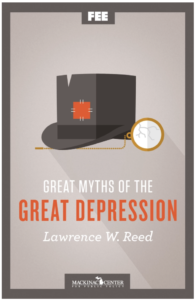
For an overview see the essay Great Myths of the Great Depression from the Foundation for Economic Education and The Mackinac Center. References at the end cite many books and research documenting how New Deal and Great Depression had disastrous economic, political, and humanitarian consequences.
Ronald Reagan explains that though the New Deal’s signature program, the National Recovery Act (NRA), was widely seen to fail badly, businessmen feared ending it suddenly would destabilize the economy. Most businessmen preferred stability and wanted reforms to phase it out gradually. However, the NRA was ended suddenly by the Supreme Court ruling its programs and powers unconstitutional.
Economic interventions and protectionist policies of the Hoover Administration deepened the recession before Franklin Roosevelt came to power, and the economic slowdown spread to Europe, hitting Germany the hardest. As rising protectionism and New Deal policies stretched the Great Depression in the U.S., German exports fell, making it even harder to pay reparations. German (misguided) monetary policy then led to hyperinflation wiping out the savings of the German middle class.
Economic interventions in U.S. economy contributed to Germany economic problems. Those who wonder if the US should have provided additional financial aid to Germany in the 1930s may have in mind The Marshall Plan, the US aid program for Germany following World War II. But that is misleading too. See, for example, THE MARSHALL PLAN REVISITED (Chicago Tribune, June 9, 1985):
The program, begun in 1948 at the urging of American Secretary of State George Marshall, sent more than $13 billion in aid to 16 countries over four years. It was meant to provide food, raw materials and technical help to enable Europe to repair the damage done by World War II, and to combat the threat of communism. By almost universal consensus, it was a great success.
But Cowen notes that its scope is much exaggerated: ”At no time did Marshall Plan aid ever exceed five percent of the gross national product of the recipient nations.” The countries which got the most help, like Greece and Austria, didn`t begin to recover until the aid was nearing its end. Others, like France, Germany and Italy, were recovering even before the help arrived.
Those facts shouldn’t be surprising. Economists like P.T. Bauer have amassed evidence that foreign aid is more likely to retard development than to speed it. The same was true in Europe. The Economic Cooperation Administration, which ran the program, used its power to press for state planning and large public sectors, both of which tend to stifle growth.
So what fueled Europe’s recovery? West Germany’s legendary economic miracle was brought about by a drastic currency reform that conquered inflation and by the removal of a variety of economic controls, particularly on prices. It was sustained, says Cowen, by ”a combination of sound monetary policy, supply-side fiscal policy and a relatively free market.”
THE MARSHALL PLAN REVISITED (Chicago Tribune, June 9, 1985)
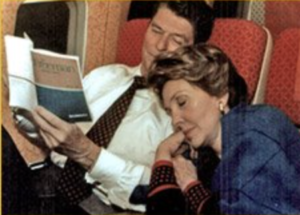
Ronald Reagan’s third example in Economic Fairy Tales briefly tells the story of what did work for West Germany after WWII: ending wage and price controls, and opening the economy to market forces. The allied powers tried to insure stability by controlling wages and prices, hoping to gradually open the economy. Instead, German economist Ludwig Erhard had the courage to “push the button” to end controls. For more, see Origins of the German Economic Miracle (The Freeman, December 1, 1988)

Full page one and two of Economic Fairy Tales:
